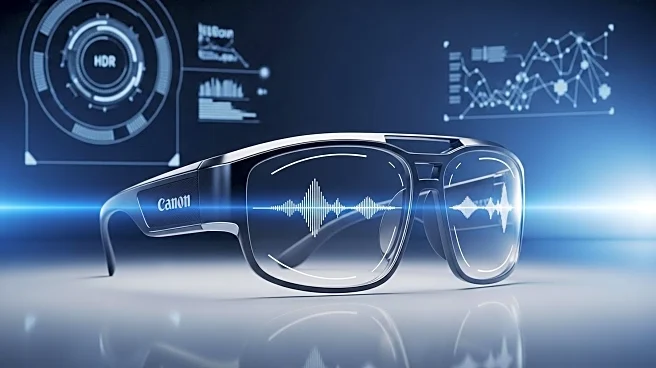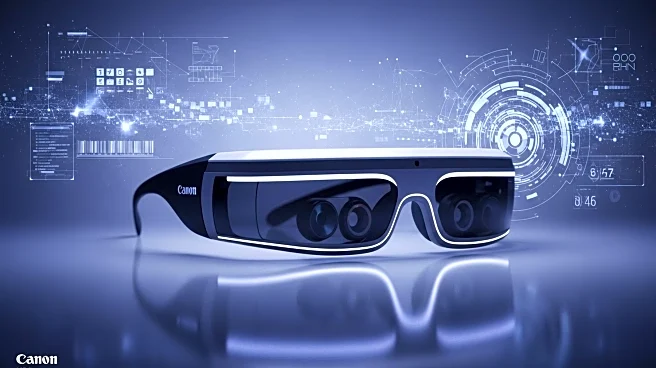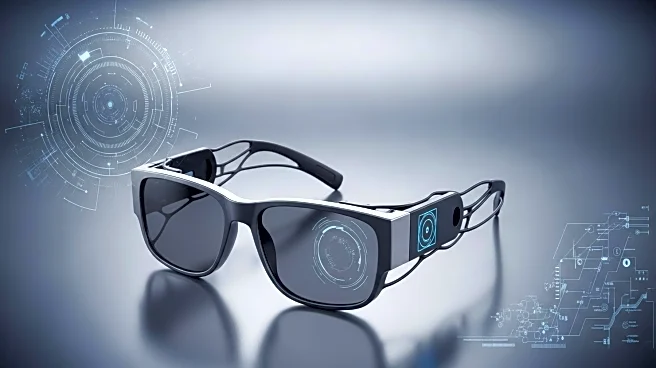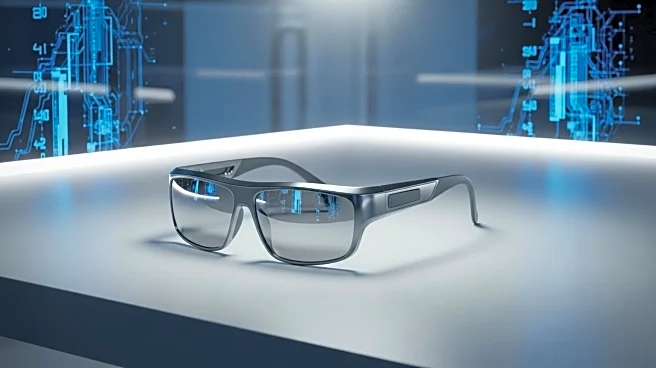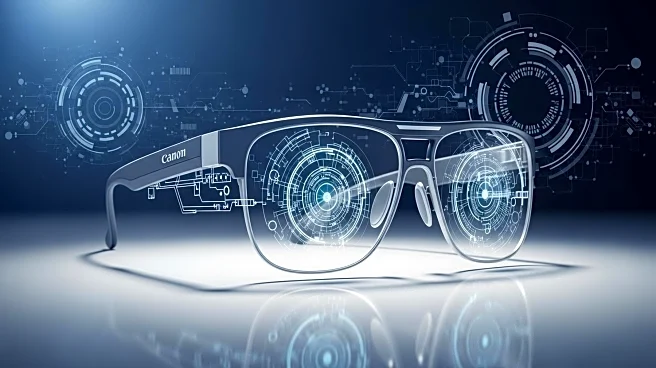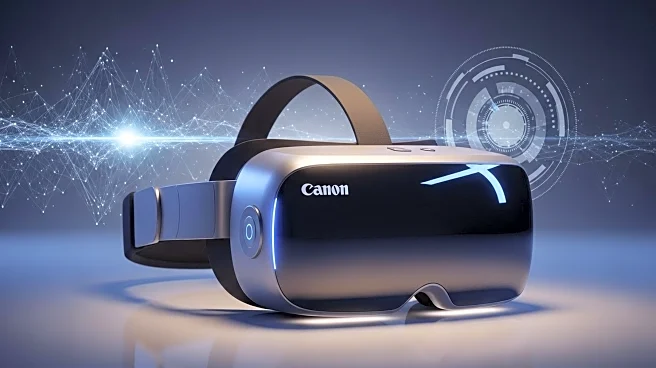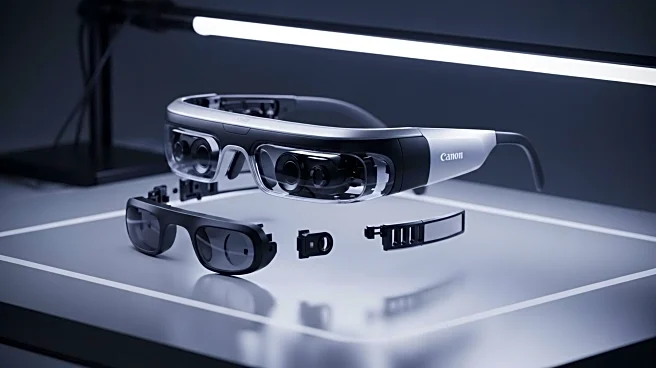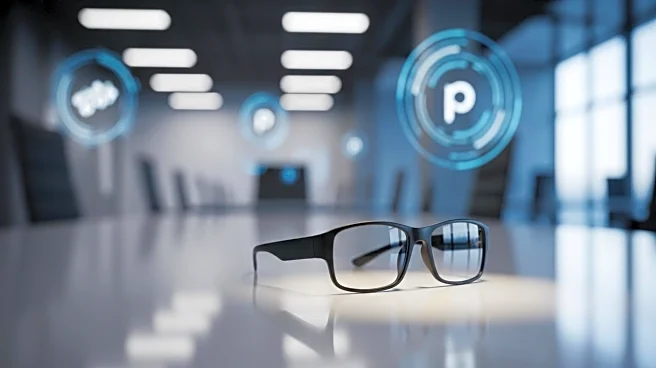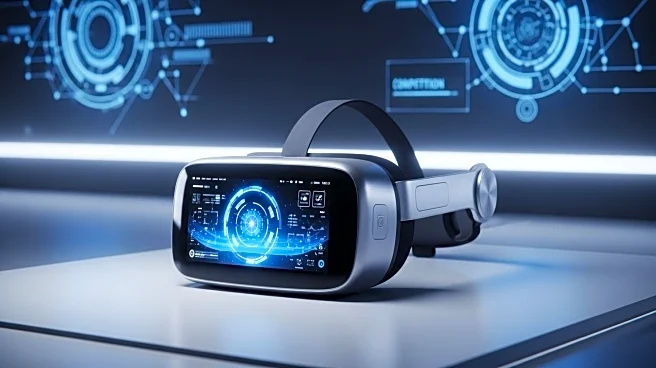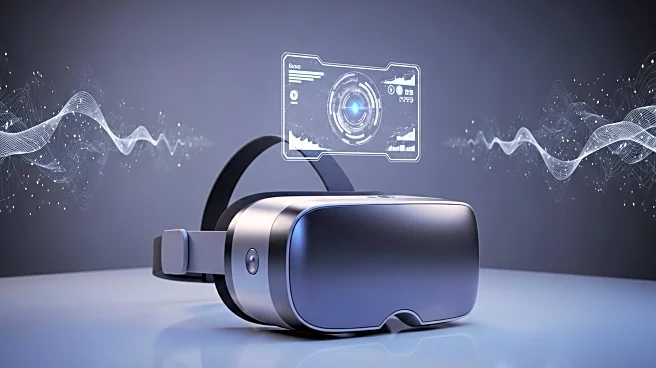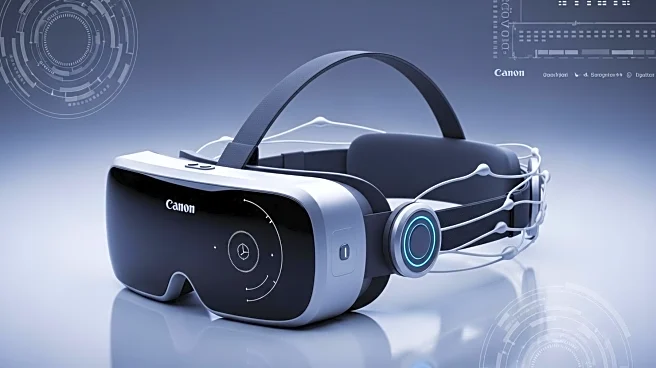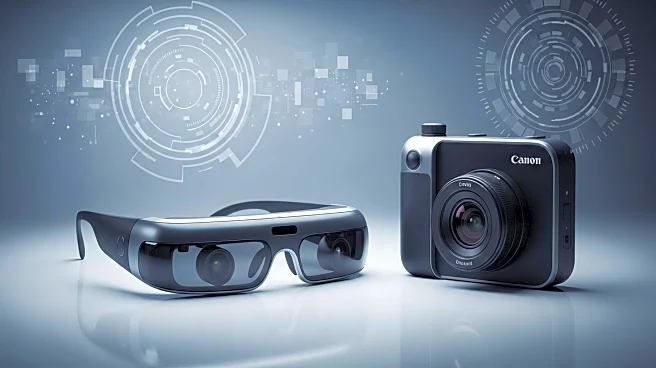What is the story about?
What's Happening?
Meta's Ray-Ban Display Glasses have been examined by iFixit, revealing the advanced waveguide technology that powers their floating display feature. The glasses utilize a geometric reflective waveguide developed by Lumus, which offers improved optical efficiency and reduced light leakage compared to traditional diffractive waveguides. This technology is integrated with a liquid crystal on silicon (LCoS) projector, reflecting images back to the user's eye. Despite the technological advancements, the glasses present repairability challenges, as spare parts are difficult to find beyond the battery. The teardown revealed a 960 mWh battery and several PCBs inside the glasses, with the antennae and special lens located in the front part.
Why It's Important?
The introduction of advanced waveguide technology in Meta's Ray-Ban Display Glasses represents a significant step forward in augmented reality applications. This technology enhances optical efficiency, potentially improving user experience in AR environments. However, the low repairability score poses challenges for consumers, as it limits the ability to maintain and repair the glasses, potentially increasing long-term costs. The difficulty in sourcing spare parts may deter some users, impacting the adoption rate of such advanced wearable technology. This development highlights the ongoing tension between technological innovation and practical usability in consumer electronics.
What's Next?
As Meta continues to innovate in the AR space, the company may need to address the repairability issues to enhance consumer satisfaction and adoption. Future iterations of the glasses could focus on improving ease of repair and availability of spare parts. Additionally, the waveguide technology could be further refined to enhance performance and reduce production costs. Stakeholders, including consumers and tech enthusiasts, will likely monitor these developments closely, influencing market trends and consumer preferences in the wearable technology sector.
Beyond the Headlines
The use of geometric reflective waveguides in AR glasses could have broader implications for the industry, potentially setting new standards for optical efficiency in wearable devices. This technology may influence the design and functionality of future AR products, encouraging competitors to adopt similar innovations. The balance between cutting-edge technology and user-friendly design will continue to be a critical factor in the success of AR devices.
AI Generated Content
Do you find this article useful?
